Hold The Line!: Famous Last Stands of World War Two
|
Warsaw:
August - October 1944
Poland's Struggle For Indepedence
by Blake Coster
The Polish Home Army (Armia Krajowa, or AK) had begun organising a national uprising against the German occupation forces as early as 1941. However, the timing would prove critical as Germany needed to be in a state of near collapse for the uprising to stand any chance of success.
In the summer of 1944, the Red Army launched Operation Bagration; crushing Army Group Centre and driving the remaining German forces to the outskirts of Warsaw. Sensing the Germans were about to abandon the city, the AK leadership set W-Hour (‘W’ for Wybuch, the Polish word for outbreak) for 1700 hours on 1 August 1944.
|
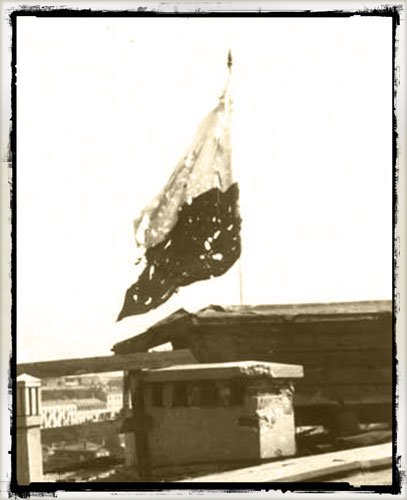
|
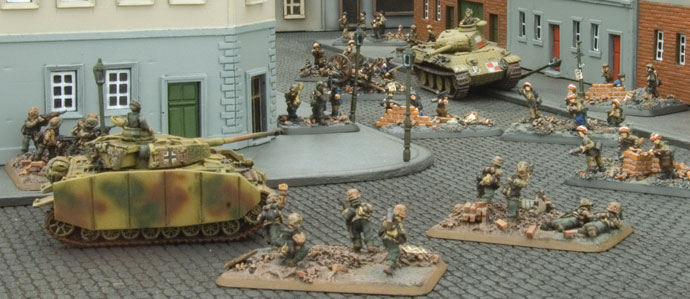 |
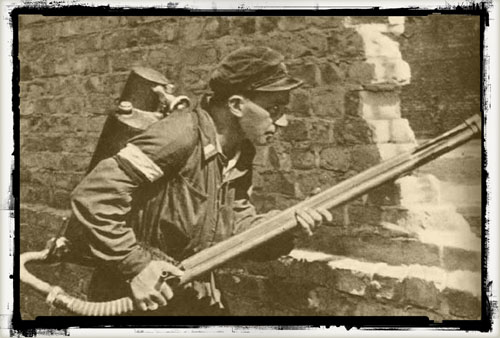
|
Surprise was the greatest weapon at the disposal of the AK, as there
were never enough weapons to arm all of the insurgents. It has been
estimated that the AK never had more than 10,000 armed personnel active
in Warsaw throughout the course of the 63 days of fighting. As W-Hour
approached, over-enthusiastic soldiers of the AK eager to lash-out
against their oppressors began attacking targets of opportunity ahead of
schedule. Other units only received orders to assemble mere moments
before W-hour. Hence, the uprising began as a series of ill-timed,
small-scale actions rather than a coordinated city-wide assault. |
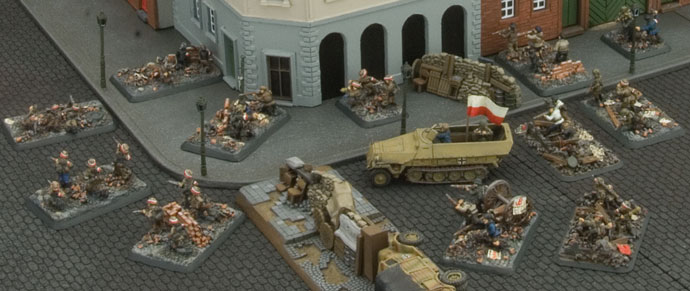 |
Once news had reached Berlin, Hilter turned to
Himmler and the Waffen-SS to ruthlessly suppress the uprising. Himmler
ordered several SS units into Warsaw tasked with the responsibility of
subduing the AK. What these units lacked in training and tactics to
operate as an effective fighting force in an urban environment, they
made up in sheer cruelty and malice. Himmler had personally ordered
Oskar Dirlewanger to use terror to break the fighting spirit of the AK.
Dirlwanger and his men along with those of RONA brigade commanded by
Bronislav Vladislavovich Kaminski took morbid pleasure in committing the
worst battlefield atrocities committed in Europe during World War Two.
In Wola, for example, estimates of civilians killed by these units
during 5-6 August, range from 30,000 to 40,000 people.
It soon became apparent that the use of such terror tactics was
having the opposite effect on the AK; now surrender meant a sure death
at the hands of Himmler’s goons, the defenders of Warsaw begun to mount a
near fanatical defence. With the men entrusted in the task of
suppressing the uprising more interested in murder, rape, and looting,
the Germans turned to superior firepower to achieve a deceive outcome.
|
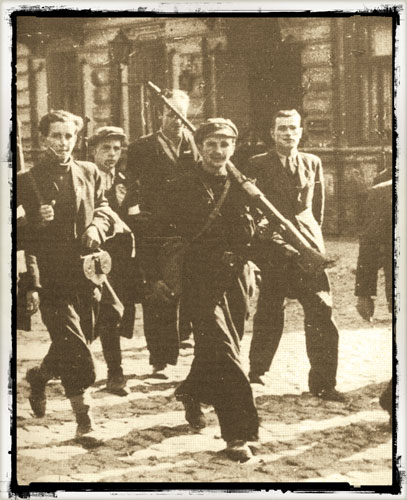
|
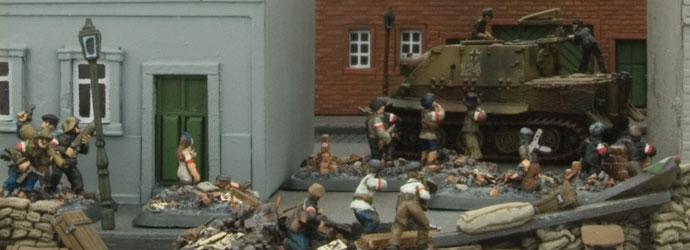 |
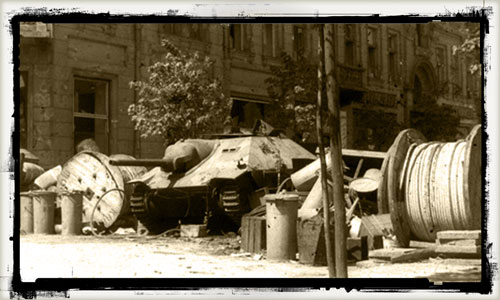
|
Meanwhile, the Polish government-inexile pleaded
with the British and Soviet forces to aid the AK in their struggle. The
British were unwilling to potentially cause irreparable harm to
Anglo-Soviet relations as Churchill while sympathetic to the cause saw
the Red Army as a critical to defeating Nazi Germany. Stalin, on the
other hand, saw the AK as a potential barrier for when he planned to
install a puppet Polish regime. Since the Germans were eliminating this
threat it meant that the Soviet leader would not have to get his hands
dirty at a later date. |
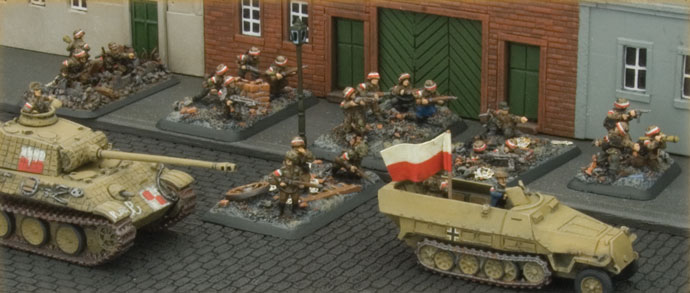 |
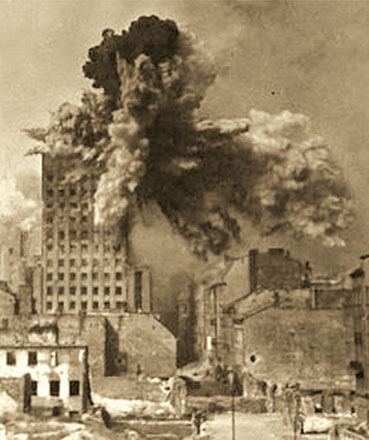 |
By late September, the AK was being squeezed on all side by constant
German pressure. The areas still held by the AK were now so small that
what limited airdrops that did take place meant a majority of the
supplies fell directly into German hands. Food supplies were also
critically low and the civilian population was now facing starvation
therefore the AK leadership were forced to begin negotiations and
discuss the conditions of a formal surrender. The two major points of
conjecture were the treatment of AK member as legal POWs and the welfare
of the civilian population. With the Germans agreeing to the Polish
terms the surrender was formally signed on 2 October 1944.
While today the Warsaw Uprising tends to be depicted as a futile and
ultimate tragic exercise, the sacrifices of the members of the AK was
honoured by government-in-exile by their continued existence during the
post-war years. This enabled the last prime minister of the
government-in-exile to return to Poland in 1991 to hand over the
presidential seals to the new president of a once again free and
independent Polish republic and thus honouring the men and women of the
AK with the outcome they fought so valiantly for.
~ Blake.
|
Leningrad:
September 1941 - January 1944
A City Under Siege
by Casey Davies
Leningrad was one of the strategic goals of the German Army Group
North during Barbarossa. The city was a significant political objective
as the symbolic capitol of the Russian Revolution. As a military
objective, Leningrad was responsible for 11% of Soviet industrial
output, as well as a main base for the Soviet Baltic Fleet. Flushed with
confidence after the initial success of Barbarossa, Hitler was so sure
that the city would ‘fall like a leaf’, that he had invitations printed
to the victory celebrations. What he didn’t count on was the tenacity of
the city’s occupants.
On 27 June 1941 the population of Leningrad was informed of the
impending danger, and over a million citizens were mobilised to fortify
the region, constructing over 190km of barricades, 635km of wire
entanglements, 700km of anti-tanks ditches, and 25000km of open
trenches. By 8 September, Leningrad was encircled and cut off from the
rest of the Soviet Union, with German forces blockading the south, and
Finnish forces advancing to their prewar borders, lost during the Winter
War, in the north.
|
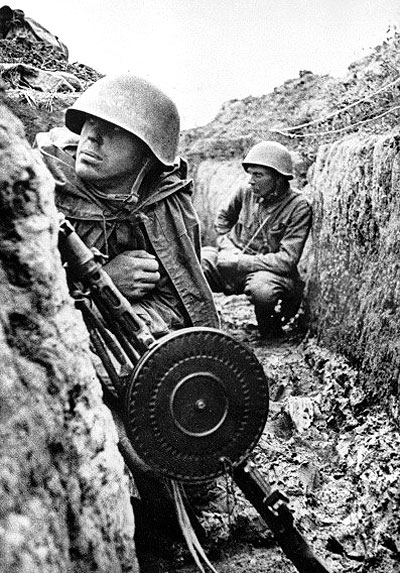
|
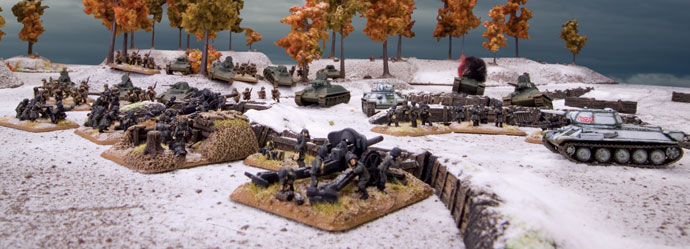 |
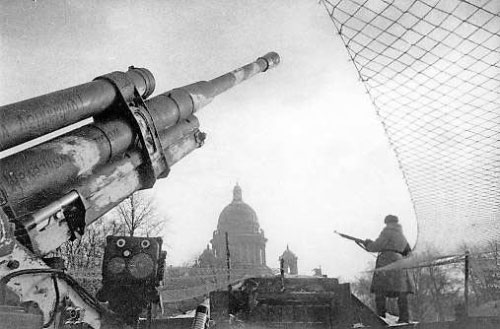
|
Feldmarschall Wilhelm Ritter von Leeb, commander
of Army Group North, had planned to take Leningrad on the move, but due
to the massive resistance from the Soviets, and Hitler recalling the 4th
Panzer Group, he was unable to press home his attack and had to hunker
down for a siege. What followed was perhaps the longest and most
destructive siege in history.
Over 25,000 civilians were wounded or killed by
German artillery shelling and bombing (only a fraction of the total
casualties) as the city was reduced to rubble. The rest were subject to
extreme starvation, having to subside on a mere 125 grams of bread each
day (which was about 50% sawdust), in extreme temperatures of down to
-30°C. |
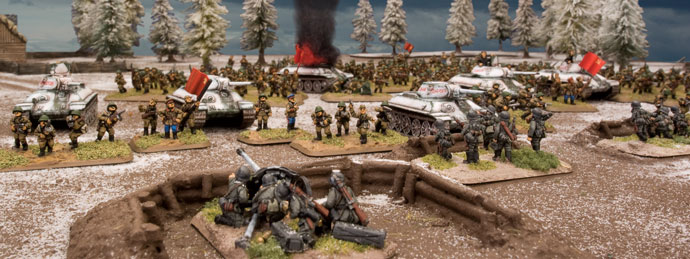 |
The only way the Red Army was able to supply and evacuate Leningrad was
over the southern part of Lake Ladoga, by watercraft during summer, and
by vehicles driven over thick ice in winter. This supply route was
called the Road Of Life by the Russians, but was also known as the Road
Of Death because of the high death toll it took. This lifeline allowed
the city to continue resisting the German siege.
The Soviet army tried to break the siege in autumn 1942 with the
Sinyavino Offensive. Unfortunately, at the same time the Germans were
preparing for Operation Nordlicht (Northern Light), and were able to
launch a quick counter-offensive to halt the Soviet offensive, deploying
the new Tiger heavy tanks for the first time.
|
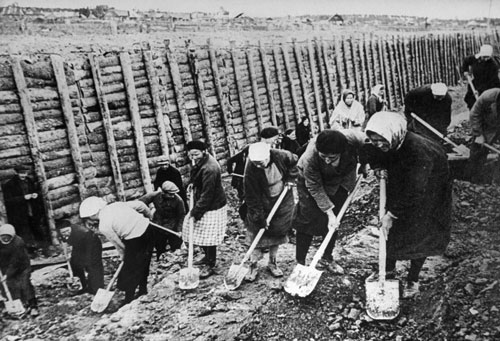
|
On 12 January 1943, the Soviets launched a second attempt to break the siege, Operation Iskra, and after nearly
a week of fierce fighting, were able to break through the German fortifications and establish a 10-12km wide land corridor to provide some relief to the besieged population. Although supplies could now make it into Leningrad, the population had to wait for another 12 months until the Soviet Leningrad-Novograd Offensive expelled the Germans from the outskirts of Leningrad on 27 January 1944.
~ Casey.
|
|
|